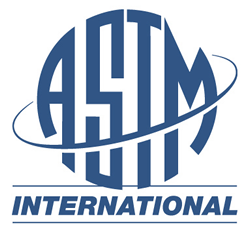 W. CONSHOHOCKEN, Pa., 2 August 2013—A proposed new ASTM International standard will describe all field-proven electrical methods for locating leaks in installed geomembranes. ASTM WK42576, Practice for Electrical Leak Location on Exposed Geosynthetics, is currently being developed by Subcommittee D35.10 on Geomembranes, part of ASTM International Committee D35 on Geosynthetics.
W. CONSHOHOCKEN, Pa., 2 August 2013—A proposed new ASTM International standard will describe all field-proven electrical methods for locating leaks in installed geomembranes. ASTM WK42576, Practice for Electrical Leak Location on Exposed Geosynthetics, is currently being developed by Subcommittee D35.10 on Geomembranes, part of ASTM International Committee D35 on Geosynthetics.
“The technology in the field of leak location develops rapidly but disseminates slowly,” says Abigail Beck, director of liner integrity services, TRI Environmental Inc., and a D35 member. “There are pockets of people all over the world who perform the methods separately but rarely come together for technology exchanges. It is important to have documents such as ASTM standards, which bring all of these technologies together in one place. Streamlining all of the exposed methods into one ASTM standard will create this place in which new developments and technologies can be added as they are developed.”
ASTM WK42576 will provide a comparison of the different leak location methods to assist the user in deciding which is appropriate for a particular application. Typical leaks consist of knife slices, punctures from equipment or tools, failed seams and forgotten patches.
“The cost of performing a method to locate leaks is a small fraction of the cost to install the geomembrane, making it an economical and sensible installation quality control method,” says Beck.
Beck notes that leak detection, using one of the procedures outlined in the proposed standard, will prevent the migration of contaminants to groundwater when a geomembrane is being used for environmental containment.
Once it has been approved, ASTM WK42576 will be used by design engineers, leak location contractors, geomembrane installers, regulators and site owners. The proposed standard will also function as an educational tool for anyone specifying liner integrity or leak location surveys of exposed geomembranes.
All interested parties are invited to contribute to the ongoing development of ASTM WK42576. In addition, the subcommittee will be working on revisions to two related standards: ASTM D6747, Guide for Selection of Techniques for Electrical Detection of Leaks in Geomembranes, and ASTM D7007, Practices for Electrical Methods for Locating Leaks in Geomembranes Covered with Water or Earth Materials.
To purchase ASTM standards, visit www.astm.org and search by the standard designation, or contact ASTM Customer Relations (phone: 877-909-ASTM; sales@astm.org). ASTM International welcomes participation in the development of its standards. For more information on becoming an ASTM member, visit www.astm.org/JOIN.
ASTM International is one of the largest international standards development and delivery systems in the world. ASTM International meets the World Trade Organization (WTO) principles for the development of international standards: coherence, consensus, development dimension, effectiveness, impartiality, openness, relevance and transparency. ASTM standards are accepted and used in research and development, product testing, quality systems and commercial transactions.
**
For more news in this sector, visit www.astm.org/sn-environmental or follow us on Twitter @ASTMEnvironment.
ASTM Committee D35 Next Meeting: 29-30 January 2014, January Committee Week, Houston, Texas
Technical Contact: Abigail Beck, TRI Environmental, Austin, Texas, Phone: 512-263-2558; abeck@tri-env.com
ASTM Staff Contact: Katerina Koperna, Phone: 610-832-9728; kkoperna@astm.org
ASTM PR Contact: Barbara Schindler, Phone: 610-832-9603; bschindl@astm.org











